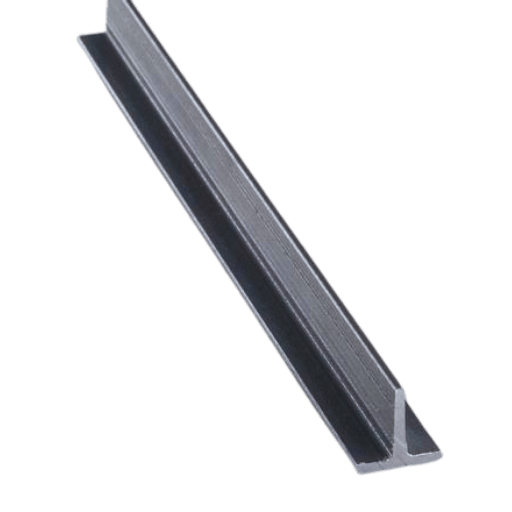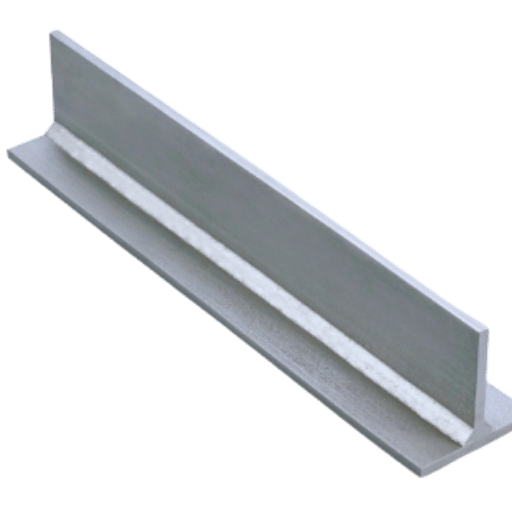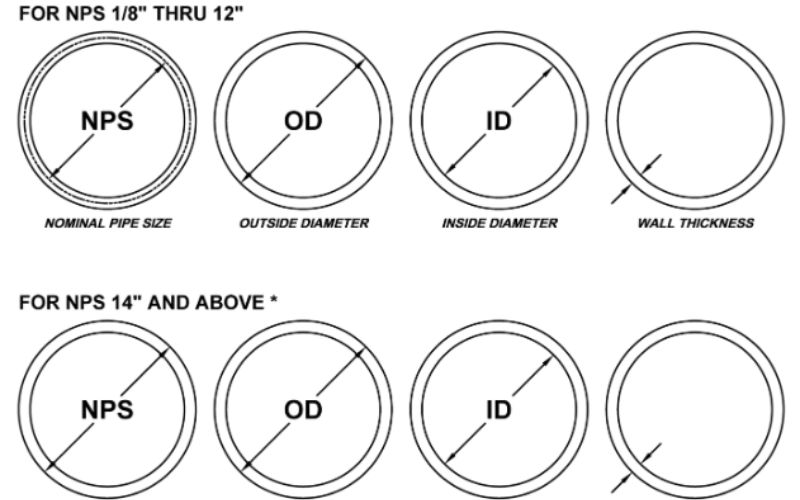Steel T-bars are a handy tool in contemporary building and construction due to their structural effectiveness. They are dearly treasured across all domains. Steel T-bars can be used in undergirding frameworks of buildings, reinforcing some architectural elements, or even in precise industrial manufacturing processes. In this tutorial, we will discuss T steel bars and their most essential features, practical uses, and the benefits they offer in various industries. This article aims to equip readers with enough information on why people working in construction worldwide depend on steel T-bars and how they can be best tailored to fit different project needs.
What Makes Steel T-Bar a Preferred Product?

Due to unparalleled strength, longevity, and versatility, steel T-bars remain a go-to product. They provide reliable support in structural frameworks, making them suitable for construction, manufacturing, and various engineering projects. Their design allows for easy incorporation into frameworks, and they can sustain large loads without deforming. Moreover, steel T-Bars are worn and corrosion-resistant, which increases their longevity in demanding environments.
Defining the Characteristics of Steel T-Bar
T-Bars are made of metal and have a T-shaped cross-section. They have a horizontal top flange and a vertical web, which offers great load-bearing capacity and structural integrity. They tend to be fabricated using high-grade steel due to its strength and durability, which also helps them withstand corrosion and other factors. Like other Steel Bars, T-bars also have diverse uses in construction, manufacturing, and supporting frameworks. They can provide even weight distribution, which is crucial for demanding applications.
Understanding the Advantages of T-Bar Material
T-bar material has numerous benefits that make it useful in a wide range of applications. Here are a few of them:
- Strength and Durability: Structural T-bars are remarkably strong since they are usually manufactured from high-strength steel. This makes them reliable in harsh industrial conditions.
- Corrosion Resistance: The material is designed to withstand various environmental conditions, resulting in lower maintenance and a longer useful life.
- Versatility: Due to their broad applicability, T-bars are used in building, manufacturing, and construction projects.
- Weight Distribution: T-bars offer exceptional stability for load-bearing structures due to their design, which allows for even weight distribution.
All these benefits show how T-bar material is efficient and useful in professional applications.
Key Applications of Steel T-Bar in Various Industries
- Construction: Steel T-bars have high strength and load-bearing capabilities, making them a perfect choice for the primary structural frameworks of buildings, bridges, and other infrastructures.
- Manufacturing: Precision and durability are fundamental in the development of any machinery, equipment, and custom components, where T-Bars are widely used.
- Transportation: Used during the assembly of vehicles, railcars, and shipping containers to optimize their weight without compromising on their strength, resulting in better structural support.
- Energy Sector: Critical for the construction of pipelines, power plants, and structurally diverse renewable energy constructions, where stability under aggressive weather conditions is essential.
- Aerospace: Used for the development of aircraft and spacecraft, as support structures require being light but incredibly strong.
The diverse and key industrial sectors that rely on T-Bars further highlight their importance and versatility.
How Does Hot Rolled Steel Tee Bar Differ from Other Types?

The Manufacturing Process of Hot Rolled Steel Tee Bar
Hot-rolled steel tee bars are made by first heating the steel above its recrystallization temperature and then shaping it with rollers. Steel becomes easier to work with at high temperatures, allowing for the accurate formation of the T-shape. Following the rolling process, the part is left to cool on its own, which improves the steel’s strength while also giving it an even surface. This method guarantees that the steel is balanced between workability and stability, making it ideal for difficult construction purposes.
Comparing Hot Rolled Steel Tee Bar with Stainless Steel
The difference between hot-rolled steel tee bars and stainless steel stems is based on their composition, characteristics, and usage. Hot-rolled steel is cheaper and has high strength and durability, making it suitable for large-scale structural projects, such as construction and industrial framing. Its strength does come with shortcomings; it is not as resistant to corrosion and moisture, so that protective coatings would be required in chemical-prone environments. These issues are exacerbated when considering plate materials.
Stainless steel, in contrast, has chromium, which makes the material highly resistant to corrosion and oxidation. While it does not perform well in humid settings, it excels in areas with high salt content or extremely hot and cold temperatures. It is also used for architectural and decorative additions because of its pleasing aesthetic and resistant finish. Its price tag may be steep, but more often than not, its value adds in long-term performance, especially in plate applications. Ultimately, the choice boils down to the material required, the environment in which it will be used, and the budget.
Examining the Mechanical Properties of Hot-Rolled Tee Bar
The hot-rolled tee bars have strong mechanical properties, making them suitable for structural applications. These attributes involve substantial strength, endurance, and the ability to resist deformation from large loads. During the hot rolling process, the material becomes more ductile, which improves its ability to withstand multiple stresses without breaking. Aside from that, hot-rolled tee bars possess a uniform surface and precise dimensional accuracy, which provides dependability in mechanical and civil construction works. Because of these attributes, they are predominantly utilized in bearing systems and other essential building components, including those with plate components.
What Sizes and Shapes are Available for T-Bar?

Standard and Custom Section Dimensions
T-bars come in various types and sizes to suit the construction and engineering fields. Standard dimensions are usually offered in specific widths, heights, and thicknesses that work for many applications. Furthermore, custom dimensions for the plate can be produced to fulfill specific project needs, ensuring the best fit and performance in specialized designs. Both standard and custom options provide flexibility, which makes T-bars serve different purposes in various structural frameworks.
Choosing the Right Size for Your Project
While choosing the right T-bar T-size for your work plan, keep in mind these vital points:
- Load Requirements: Ensure you determine the expected weight and the forces that the T-bar will need to support. This will be easier after determining the load/bearing limits that the size will have to work with safely.
- Project Specifications: Check the design features, such as length, breadth, and height, to customize the T-bar appropriately.
- Material Compatibility: Check if the T-bar is made from a material suitable for the work environment and the project’s lifespan.
- Industry Standards: Ensure the T-bar complies with relevant building regulations regarding the physical security of the structure and its essential components.
For more suitable instructions, don’t hesitate to reach out to your project structural engineer or the manufacturer for T-bar specifications.
Options for Custom Cuts and Shapes
T-bar custom cuts and shapes are often available to fulfill particular project needs. Manufacturers offer options that include cutting T-bars to a specific length, as well as custom angle cuts and width adjustments, to address structural and design requirements. Clients may add requests for specialized notches and perforations to improve compatibility with other components. For optimal solutions, consulting with plate manufacturers for customization options is recommended to ensure that all safety and building standards are met with any structural modification.
How Does Structural Steel T-Bar Ensure Durability?

Exploring the Strength and Durability of T-Bar
T-bars made from structural steel have high tensile strength and withstand external stressors, ensuring longevity. T-bars resist deformation and heavy loads because they are made from steel alloys. Their inherent resistance to properly treated corrosion also extends longevity even in harsh environments. Their uniform composition and consistent quality make them reliable for structural applications. With proper treatment, they maintain their structural integrity over long periods. This makes T-Bars a dependable solution for the evolving needs of construction and engineering.
How T-Bar Resists Shear and Compressive Stress
T-bars and plate systems perform remarkably well when subjected to combined shear and compressive stress due to their geometric profile and material properties. The flange of the T-bar distributes compressive forces due to its wide surface area, thus reducing the likelihood of localized failure. In addition, the vertical web of the T-bar increases the ability to resist shear force by keeping the structure rigid and the cup transferring forces uniformly.
Newer technologies in material engineering have enhanced the ability of T-bars to withstand more significant stress in structures, such as plates. For example, recently manufactured high-strength steel alloys have become available, with yield strengths exceeding 50 ksi; some even exceed this value. Also, through FEA, the T-shaped cross-section has been shown to perform exceptionally well under combined loading conditions, which lead to stress concentration. These reasons make T-bars reliable for use in industrial applications, such as bridge construction, shipbuilding, and mechanical frameworks, where dual stresses are commonly experienced.
Ensuring Quality Control and Full Traceability
For T-bars, quality control and traceability require following industry practices along with thorough testing of the materials. Ultrasonic inspection, as well as radiographic inspection and other non-destructive examination techniques, are used to detect flaws and assess soundness. Furthermore, detailed documentation, such as material test reports (MTRs) and traceability records, confirms the identity of materials and their corresponding details. This guarantees that every T-bar is performance-compliant and completely traceable throughout its lifecycle.
What Are the Ordering Standards and Services for Steel T-Bar?

Understanding Order Specifications and Standards
When purchasing steel T-bars, it’s essential to specify the required measurements, material grade, and finish to ensure that the steel T-bars meet the relevant application requirements. Common standards, such as ASTM or EN, define the mechanical properties, chemical composition, and quality specifications of steel T-bars. Moreover, stating any required certifications, such as material test reports (MTRs), ensures compliance with accepted industry standards and maintains traceability. Attention to detail and specification at the ordering phase improves production and shipping efficiency.
Exploring Shipping and Delivery Services
Effective shipping and delivery services help ensure that products arrive at the right locations promptly. Good providers emphasize effective logistics. They have standard delivery options, expedited shipping, and freight services depending on the order volume and timelines. Important logistical aspects include cost, transit times, and tracking. Tracking adds transparency, which improves customer satisfaction. Businesses that use other trusted operators are assured of the same quality of service and compliance with delivery timelines. This is especially critical when moving bulky and heavy materials, like plates.
Ensuring Customer Service Excellence
To maintain superlative customer service standards, a business needs to focus on clear interactions and resolving issues promptly. Having dedicated and trained personnel who manage inquiries on a first-rate customer service level fosters trust, enabling customer loyalty. Technological facilities like live chat or FAQs are just a few of the many reliable customer support systems that offer easy access to critical information. Gathering and acting on customer participation information or feedback also helps identify how services can be enhanced for plate production.
Frequently Asked Questions (FAQs)
Q: What are the properties of Steel T-Bars, and where are they primarily used?
A: Steel T-Bars are a type of metal profile with a T-shaped cross-section designed for construction as well as industrial purposes. T-bars are used as superstructures, like frameworks and support beams, and they also serve as thrust-bearing members.
Q: In what way does the shape of a T-Bar aid in construction?
A: The T-Bar has a contour that consists of a vertical part called the web and a horizontal top part called the flange. T-shaped sections have proved to be very economical and efficient in heavy-duty constructions due to their remarkable load-bearing capability.
Q: What other metals can Steel T Bars be made of, and what else must I consider when choosing one?
A: Steel T-bars can also be manufactured from other metals, such as aluminum, brass, and zinc. Keep in mind the intended use, surrounding conditions, weight, and the strength required to determine which metal best suits your needs.
Q: Where lies the cost effectiveness of using Steel T Bars in construction projects?
A: Steel T Bars trump competitors in producing effortless and economically priced constructions because T Bars combine steel’s versatility and sturdy nature at a low price. Strikingly high construction costs are avoided because T-bars have low susceptibility to bending when pressed.
Q: What steps do I take to purchase high-quality steel T-bars?
A: The best-quality steel T-bars can be purchased from reputable suppliers who deal in premium metal and have products that meet ASTM standards. You may also consider their shipping policies as a service standard.
Q: In what ways can Steel T Bars be customized to fit specific project needs?
A: To better tailor Sterl T Bars to project-specific needs, they can be customized in terms of dimensions, metal type, and coatings. There are usually precision cutting services to enhance suitability and fulfill functionality.
Q: What benefits do online platforms offer when purchasing Steel T Bars?
A: Assessing numerous products, their prices, customer feedback, and acquiring the Steel T Bars is all made easy with a single click. Many such platforms ship products, ensuring materials are premium, reliable, and of the specified quality.
Q: Do environmental conditions affect the performance of Steel T Bars?
A: The performance of steel T-bars is impacted by specific external environments, such as heat and humidity. Other factors, such as structural integrity and climate, also need appropriate metal types and treatments to enhance corrosion resistance.
Q: Why is the web and flange shaped like this when it comes to the design of Steel T-Bars?
A: The web provides vertical support while the flange offers horizontal support. This enables the T-Bar to endure extreme compressive forces while providing exceptional strength and durability in construction. The combination of the two also helps eliminate excessive bending.
Reference Sources
1. Additive Manufacturing of Wire Arc Steel T-Stub Connections: an Experimental Study (Guo et al., 2023)
- Key Findings:
- Steel T-stub connections can be made using wire arc additive manufacturing (WAAM).
- The mechanical performance of WAAM T-stub connections was equal to, or in some cases, exceeded that of traditional welded T-stub connections.
- Methodology:
- Conducted experimental simulations of tensile load on WAAM and welded steel T-stub connections.
- Evaluation for other mechanical properties like the rate of initial stiffness, yield strength, and ultimate strength.
2. Stresses and distortion in T-Joint of high-strength steel caused by welding: An experimental and numerical study (Ghafouri et al., 2022)
- Key Findings
- In welding high-strength steel T joints, residual stresses and distortion are significant.
- The predictive capability of computational welding engineering is validated through experiments measuring residual stresses and distortions.
- Methodology
- The experiment includes measuring the residual stresses and distortion in the T-joint of high-strength steel.
- Simulating the welding process to determine residual stresses and distortion was performed using finite element modeling coupled with advanced welding simulation techniques.
3. Fatigue Analysis of Welded Tubular Steel T-Joints (Yücel & Talaslioglu, 2022)
- Key Findings:
- Under cyclic loading, welded tubular steel T-joints and plate connections are prone to fatigue failure.
- The fatigue life of T-joints is enhanced by applying high-strength steel and optimizing the weld geometry.
- Methodology:
- Conducted experimental fatigue testing on welded tubular steel T-joints and plate assemblies to assess their performance under stress.
- Performed stress analysis and fatigue life assessment through finite element analysis on the T-joints.




